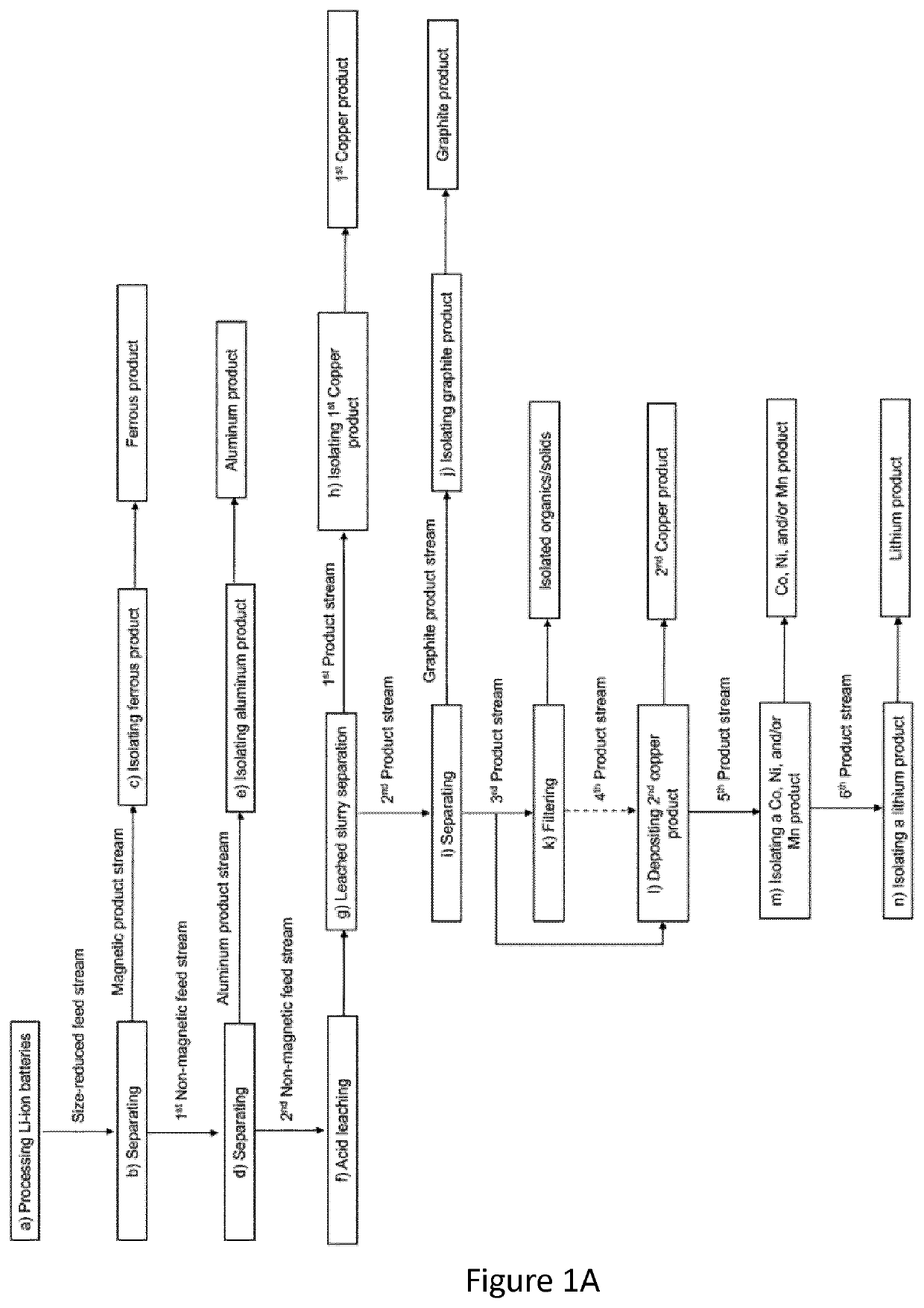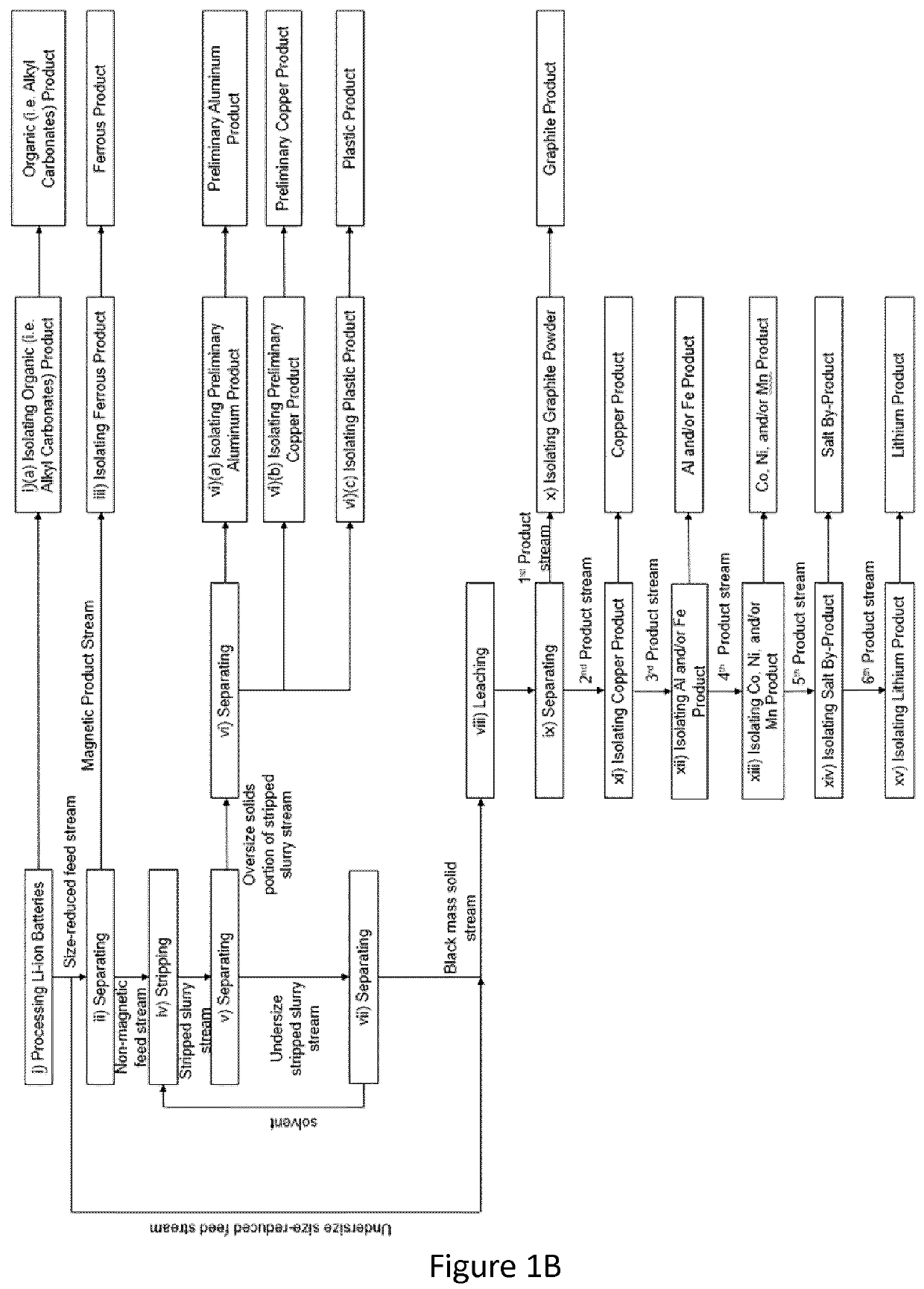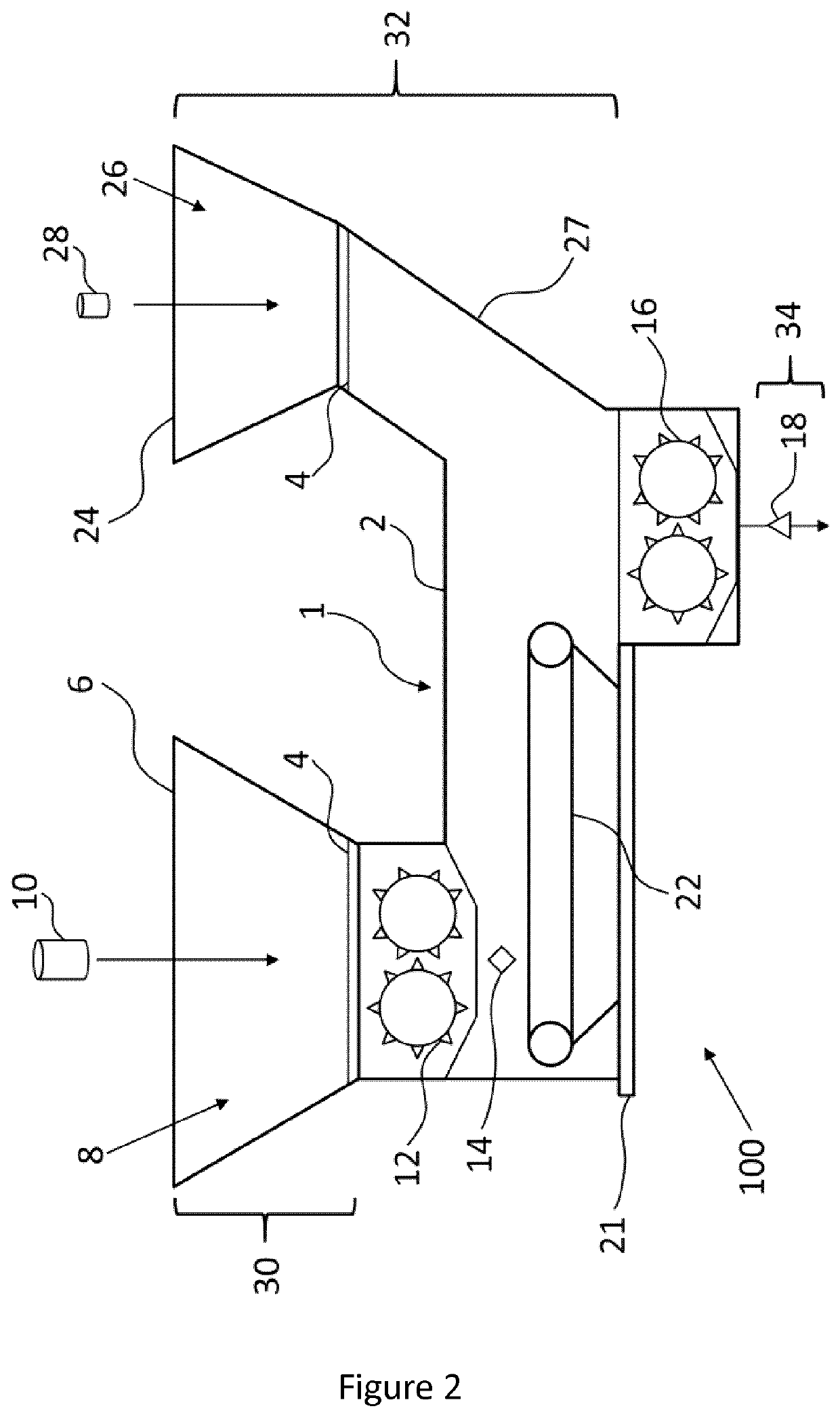Process, apparatus, and system for recovering materials from batteries
a technology for recovering materials and batteries, applied in electrical equipment, mechanical material recovery, solid separation, etc., can solve the problems of lithium being unrecoverable economically and less than 5% of the lithium-ion batteries produced worldwid
- Summary
- Abstract
- Description
- Claims
- Application Information
AI Technical Summary
Benefits of technology
Problems solved by technology
Method used
Image
Examples
example 1
Exemplary Embodiment of Process 1
[0223]The following example describes phases, steps, design criteria, and IDEAS process simulation parameters (IDEAS Bronze, Mineral Processing package, v6.0.0.995) of said process for recovering materials from rechargeable lithium-ion batteries.
[0224]Phase 1: Feed Size Reduction
[0225]Incoming large format lithium-ion batteries (e.g. automotive, energy storage system battery packs) and small format lithium-ion batteries (e.g. from laptops, mobile phones, tablets, etc.) are optionally discharged to approximately between 1.0 to 2.0 V, or to approximately 0 V prior to any mechanical treatment. Discharged energy optionally reports to a central electrical storage bank, which provides peak load reduction for, for example, plant facility-wide power consumption. Discharging lithium-ion batteries facilitates controlling energy released during possible short circuiting events wherein the batteries' anode(s) and cathode(s) come into contact during a battery dis...
example 2
Exemplary Embodiment of Process 2
[0263]In particular, the following example describes phases, steps, design criteria, and IDEAS process simulation parameters (IDEAS Bronze, Mineral Processing package, v6.0.0.995) of said process for recovering materials from rechargeable lithium-ion batteries.
[0264]Phase 1: Feed Size Reduction (e.g. Steps (i) and (i)(a) of FIG. 1B)
[0265]As in Process 1 above, incoming large format lithium-ion batteries (e.g. automotive, energy storage system battery packs) and small format lithium-ion batteries (e.g. from laptops, mobile phones, tablets, etc.) are optionally discharged to approximately between 1.0 to 2.0 V, or to approximately 0 V prior to any mechanical treatment. Discharged energy optionally reports to a central electrical storage bank, which provides peak load reduction for, for example, plant facility-wide power consumption. Discharging lithium-ion batteries facilitates controlling energy released during possible short-circuiting events wherein ...
example 3
Validation of Process 2
[0302]Size reduction of lithium-ion batteries was conducted as outlined in Example 5 below, dry magnetic separation was conducted to separate the scrap steel (magnetic product stream) from the rest of the material (non-magnetic feed stream). The non-magnetic feed stream was then stripped by mixing at 10 wt % with N-Methyl-2-pyrrolidone (NMP) as a stripping solvent at 80° C. for 6 hours to release the cathode and anode from their substrates which are made of aluminum (Al) and copper (Cu) foils. The stripped slurry stream was passed through a 500 μm screen to separate the undersize stripped slurry stream containing fine cathode and anode material and the liquid organic solvent (i.e. stripping solvent) from the oversize solids portion containing Al, Cu, and plastic pieces of the substrate. The oversize solids portion was subjected to density (densimetric) separation to separate the Al, Cu, and plastic from each other. The plastic was separated using a liquid with...
PUM
| Property | Measurement | Unit |
|---|---|---|
| Temperature | aaaaa | aaaaa |
| Temperature | aaaaa | aaaaa |
| Temperature | aaaaa | aaaaa |
Abstract
Description
Claims
Application Information
 Login to View More
Login to View More - R&D
- Intellectual Property
- Life Sciences
- Materials
- Tech Scout
- Unparalleled Data Quality
- Higher Quality Content
- 60% Fewer Hallucinations
Browse by: Latest US Patents, China's latest patents, Technical Efficacy Thesaurus, Application Domain, Technology Topic, Popular Technical Reports.
© 2025 PatSnap. All rights reserved.Legal|Privacy policy|Modern Slavery Act Transparency Statement|Sitemap|About US| Contact US: help@patsnap.com



